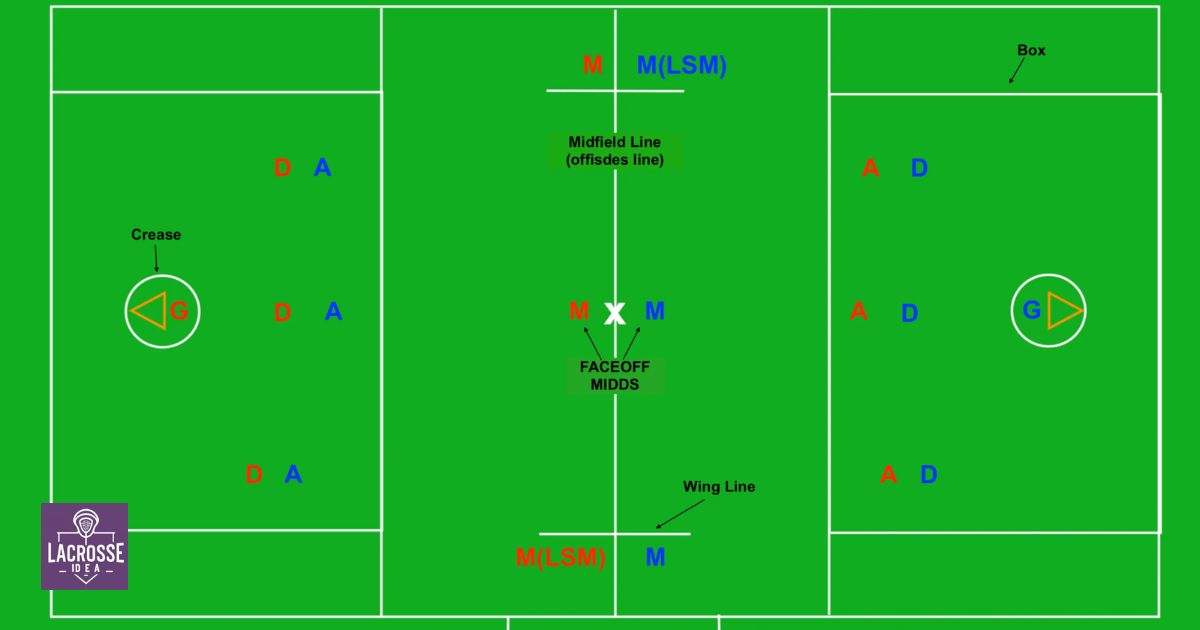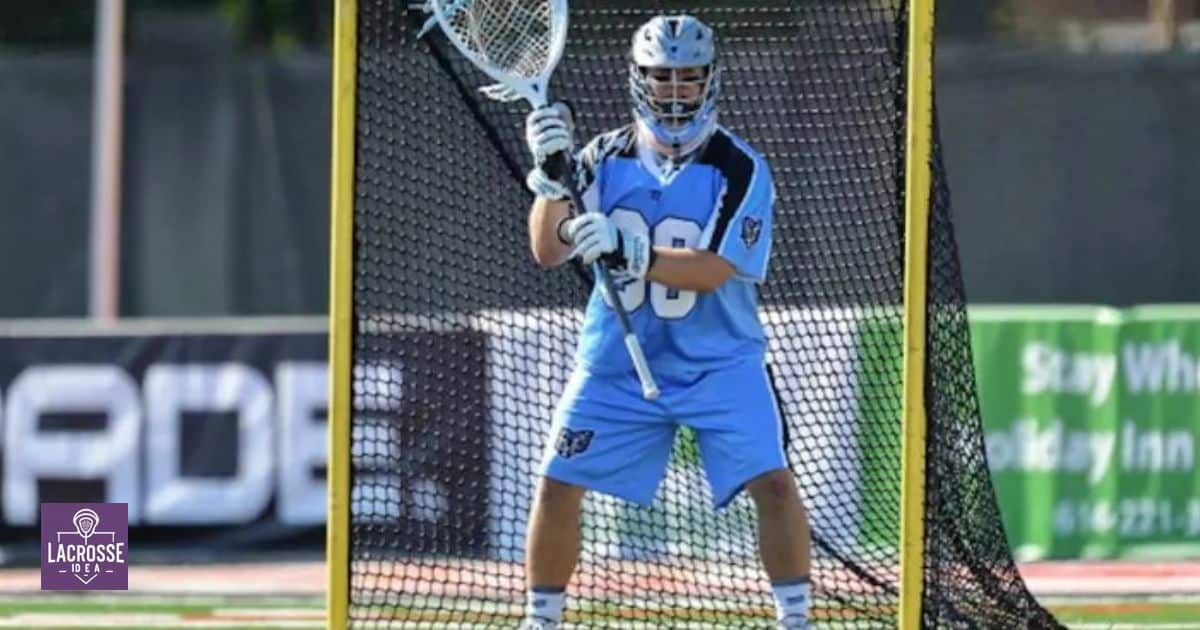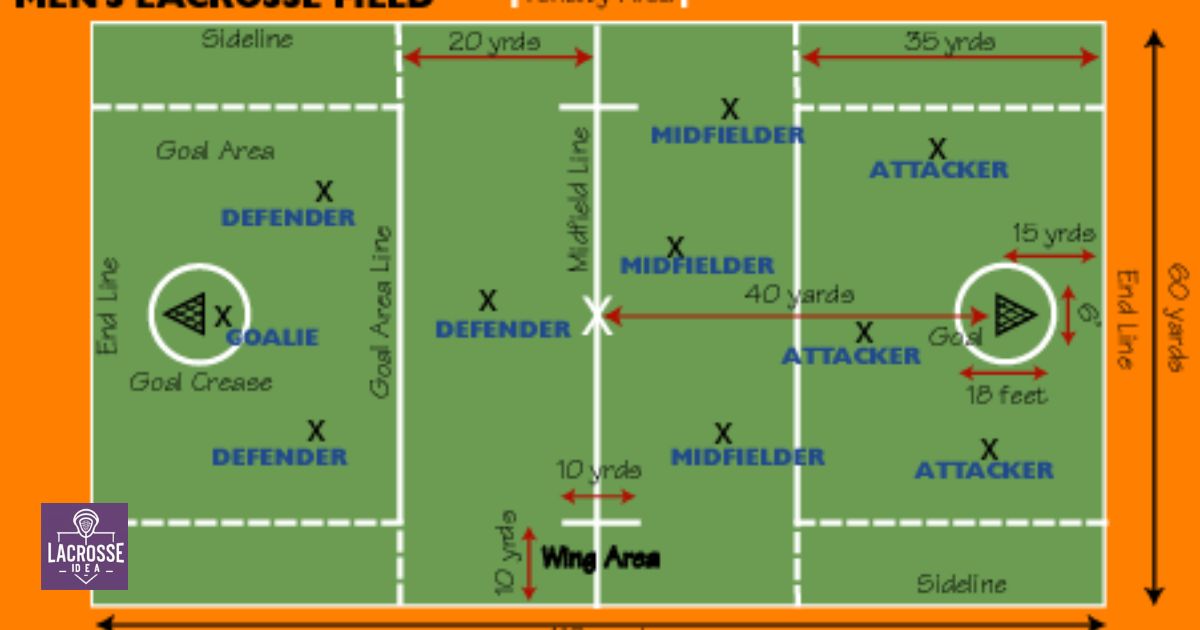In the dynamic world of lacrosse, finding your rightful place on the field can be a daunting task. Amidst the terrain of attackers, midfielders, defenders, goalies, face-off specialists, and specialty positions, lies the question of which role will suit you best. By exploring the fundamental aspects of the game and considering various factors, this article aims to guide you towards the position that will not only showcase your skills but also provide a sense of belonging in the lacrosse community.
Key Takeaways
- Offensive positions in lacrosse include the attacker, who is responsible for scoring goals and creating offensive opportunities.
- Midfield positions involve midfielders who play a crucial role in both offense and defense, providing support in all areas of the field.
- Defensive positions consist of defenders who maintain the team’s defensive structure and goalies who are the last line of defense in protecting the team’s goal.
- Specialty positions include the face-off specialist (FOGO) who plays a crucial role in securing possession at the start of the game.
Attacker

The attacker in lacrosse is primarily responsible for scoring goals and creating offensive opportunities for their team. As an attacker, your main objective is to outsmart and outmaneuver the opposing team’s defense, using your speed, agility, and stick skills to your advantage. You must work closely with your teammates to execute coordinated plays and maintain a strong offensive presence on the field.
A successful attacker is not only a skilled scorer but also an effective playmaker, constantly looking for opportunities to assist their teammates and create scoring chances. It is crucial to have a strong lacrosse IQ, as you need to read the defense, make quick decisions, and adapt to the ever-changing dynamics of the game. By mastering these skills, you will contribute significantly to your team’s success and foster a sense of belonging within the lacrosse community.
Midfielder
As an integral part of the lacrosse team, the midfielder plays a crucial role in both offensive and defensive strategies, using their versatility and endurance to impact the game. Midfielders are the engine of the team, constantly transitioning between offense and defense and providing support in all areas of the field. They possess the speed and agility to navigate through opponents and the stamina to maintain a high level of play throughout the game.
Midfielders are responsible for winning face-offs, controlling possession, and setting up scoring opportunities for their team. They must possess excellent stick skills, strong communication abilities, and a deep understanding of the game. Transitioning seamlessly between offense and defense, midfielders are the link that connects the team’s attack and defense. They are the heartbeat of the team, constantly driving the game forward. In the next section, we will explore the role of the defender in lacrosse.
Defender
Moving on to the role of the defender in lacrosse, it is crucial to understand their responsibilities in maintaining the team’s defensive structure. Defenders play a vital role in protecting the goal and preventing the opposing team from scoring. Here are three key responsibilities of a defender:
- Marking the attacker: Defenders must closely guard their assigned attacker, denying them space and preventing them from receiving passes or taking shots on goal.
- Communication and teamwork: Defenders need to communicate with their teammates, calling out switches and providing support. They must work together to cover the field effectively and disrupt the opposing team’s offensive plays.
- Clearing the ball: Defenders play a crucial role in transitioning from defense to offense. They need to be skilled at clearing the ball, which involves moving the ball out of the defensive zone and starting the team’s offensive attack.
A successful defender must possess excellent stick skills, agility, and a strong understanding of defensive positioning. By fulfilling these responsibilities, defenders contribute to the overall success of the team and create a sense of belonging within the defensive unit.
Goalie

Continuing the exploration of positions in lacrosse, the crucial role of the goalie comes into focus. As the last line of defense, the goalie plays an integral role in protecting the team’s goal and preventing the opposing team from scoring. This position requires a unique set of skills, including exceptional hand-eye coordination, quick reflexes, and the ability to read the game.
Goalies must have the mental toughness to withstand the pressure of facing powerful shots and making split-second decisions. Their role is not only to make saves but also to communicate with the defense and direct the team’s play. Transitioning smoothly into the subsequent section about the face-off specialist (fogo), let us now delve into the importance of securing possession at the start of the game.
Face-Off Specialist (FOGO)
The face-off specialist, also known as the FOGO, plays a crucial role in securing possession at the start of the game, utilizing their specialized skills and techniques. Here are three key aspects of the FOGO’s role:
- Technique: The FOGO must master the art of the face-off, which involves quickly and skillfully maneuvering the ball into a favorable position for their team. They use their stick skills, footwork, and physicality to gain an advantage against their opponent.
- Speed and Agility: Being able to react swiftly and explosively is essential for a successful face-off specialist. They need to anticipate the referee’s whistle and explode off the ground to gain possession of the ball.
- Communication: The FOGO must have excellent communication skills to coordinate with their teammates. They need to quickly relay information about the outcome of the face-off to ensure the team can transition smoothly into offense or defense.
Being a face-off specialist requires dedication, practice, and a strong desire to contribute to the team’s success.
Long Stick Midfielder (LSM)
As a Long Stick Midfielder (LSM), your role on the lacrosse field expands beyond securing possession at the start of the game, adding a crucial defensive element to your team’s strategies. LSMs are known for their versatility and athleticism, as they must be proficient in both offensive and defensive skills. Your primary responsibility as an LSM is to disrupt the opposing team’s offensive plays by using your long stick to intercept passes, check opponents, and create turnovers.
Additionally, you play an essential role in transitioning the ball from defense to offense, using your speed and agility to push the ball up the field and initiate fast breaks. The LSM position requires discipline, communication, and adaptability to contribute effectively to your team’s success. Now, let’s move on to discussing the various positions in women’s lacrosse.
Women’s Lacrosse Positions
Moving on to the topic of women’s lacrosse positions, it is important to explore the various roles that players can assume on the field. In women’s lacrosse, there are several key positions that players can choose to play. These positions are designed to maximize team performance and individual skills.
- Attack: The attack position focuses on scoring goals and setting up plays. Attack players are typically quick, agile, and have strong stick skills. They work closely with the midfielders to create scoring opportunities and maintain possession of the ball.
- Midfield: Midfielders play a crucial role in both offense and defense. They are responsible for transitioning the ball between the attack and defensive ends of the field. Midfielders need to be fast, versatile, and have excellent endurance to cover the entire field.
- Defense: The defense position is all about protecting the goal and preventing the opposing team from scoring. Defenders must have strong footwork, stick-checking abilities, and communication skills. They work as a unit to disrupt the opposing team’s offense and force turnovers.
Men’s Lacrosse Positions
There are several key positions in men’s lacrosse that players can choose to play. Each position requires specific skills and responsibilities, contributing to the overall success of the team. The primary positions in men’s lacrosse are attackmen, midfielders, defensemen, and the goalie.
Attackmen are responsible for scoring goals and creating offensive plays. They must have excellent stick skills, quickness, and the ability to read the defense. Midfielders, on the other hand, play both offense and defense. They are versatile players who need to possess speed, endurance, and the ability to transition the ball between the attacking and defensive zones.
Defensemen focus on preventing the opposing team from scoring. They must be strong, agile, and possess good communication skills to coordinate with their teammates. Lastly, the goalie is the last line of defense and must have quick reflexes, excellent hand-eye coordination, and the ability to make split-second decisions.
Each position requires different skills, and players should choose the one that aligns with their strengths and interests. Finding the right position can lead to a sense of belonging and contribute to a player’s overall satisfaction and success in the game of lacrosse.
Specialty Positions
Specialty positions in men’s lacrosse offer players the opportunity to excel in specific roles, further enhancing the team’s performance. These positions require unique skills and expertise, allowing players to showcase their talents in a particular area of the game. Here are three specialty positions in men’s lacrosse:
- Faceoff Specialist: This position requires exceptional hand-eye coordination and quick reflexes. Faceoff specialists are responsible for winning possession of the ball at the start of each quarter and after goals. Their ability to win faceoffs can give their team a significant advantage in controlling the game.
- Goalie: The goalie is the last line of defense and plays a crucial role in preventing the opposing team from scoring. They must possess excellent hand-eye coordination, agility, and the ability to make split-second decisions to make saves and lead their team’s defense.
- Attackman: Attackmen are responsible for scoring goals and creating offensive opportunities. They need to be skilled at dodging defenders, shooting accurately, and setting up their teammates for scoring chances. Their ability to read the defense and make quick decisions is essential in helping their team score.
These specialty positions provide players with the opportunity to focus on specific aspects of the game, contributing to the overall success of the team. Whether you excel at faceoffs, defending the goal, or scoring goals, there is a specialty position that allows you to shine and make a significant impact on the field.
Factors To Consider
When determining the most suitable position to play in lacrosse, it is important to consider a variety of factors. These factors include your physical attributes, skills, and playing style. Firstly, think about your body type and athleticism. If you are tall and have good hand-eye coordination, you might be well-suited for the goalie position. On the other hand, if you are quick and agile, you may excel as a midfielder or attacker.
Secondly, evaluate your skills and strengths. Are you a strong passer and shooter? Then playing as an attacker might be a good fit. Lastly, consider your playing style. Do you enjoy being in the thick of the action or do you prefer a more strategic role? These factors will help you determine the position in lacrosse where you can best contribute to your team’s success.
Understanding The Basics
To gain a deeper understanding of lacrosse positions, it is essential to grasp the basics of the game. Here are three key elements to help you familiarize yourself with lacrosse:
- Field and Equipment: Lacrosse is played on a rectangular field with goals at each end. Players use a small rubber ball and long-handled sticks, known as crosse, to pass, catch, and shoot. Understanding the dimensions of the field and the purpose of each piece of equipment is crucial.
- Gameplay: Lacrosse combines elements of basketball, soccer, and hockey. The objective is to score goals by shooting the ball into the opponent’s net while defending your own. It involves passing, dodging, ground ball pickups, and various offensive and defensive strategies.
- Positions: Lacrosse has different positions, each with specific roles and responsibilities. These include attack, midfield, defense, and goaltender. Understanding the unique attributes and skills required for each position will help you determine which one suits you best.
Tips For Choosing The Right Position
Continuing from our previous discussion on understanding the basics of lacrosse, it is important to carefully consider your skills and preferences when selecting the most suitable position for you in the game. To choose the right position, start by assessing your strengths and weaknesses. Are you fast and agile? Consider playing as an attacker or midfielder. Do you have good hand-eye coordination?
Defense might be a better fit. Additionally, think about your playing style and what role you enjoy the most. Are you a team player who enjoys setting up plays and assisting others? Consider being a midfielder. If you prefer being in the spotlight and scoring goals, being an attacker might be your calling. Remember, the key is to find a position that aligns with your skills, preferences, and desire to contribute to the team’s success.
Frequently Asked Questions
What Are the Physical Requirements for Each Lacrosse Position?
Each lacrosse position requires specific physical attributes to excel. Attackers need speed, agility, and excellent stick-handling skills. Midfielders need endurance, speed, and the ability to transition between offense and defense. Defenders need strength, agility, and good communication skills. Goalies need quick reflexes and excellent hand-eye coordination.
How Does the Role of a Midfielder Differ in Women’s Lacrosse Compared to Men’s Lacrosse?
The role of a midfielder in women’s lacrosse differs from that in men’s lacrosse due to varying rules and strategies. In women’s lacrosse, midfielders focus on both offense and defense, while in men’s lacrosse, they primarily serve as transition players.
Can a Player Switch Positions During a Lacrosse Game?
Yes, a player can switch positions during a lacrosse game. This allows for strategic adjustments and can be a result of coaching decisions or specific game situations that require a player to fill a different role.
Are There Any Specific Skills or Techniques That Are Crucial for a Goalie to Master?
When considering the specific skills and techniques crucial for a goalie to master in lacrosse, it is important to focus on aspects such as hand-eye coordination, footwork, agility, communication, and decision-making abilities.
What Are Some Common Misconceptions About Certain Lacrosse Positions?
When it comes to lacrosse positions, there are several common misconceptions that players may have. Understanding these misconceptions can help individuals make informed decisions about which position may be best suited for their skills and abilities.
Conclusion
In conclusion, when deciding which position to play in lacrosse, it is important to consider various factors such as skills, physical attributes, and personal preferences. Understanding the basics of each position and considering specialty positions can help in making an informed decision. Remember, choosing the right position requires careful thought and consideration.







